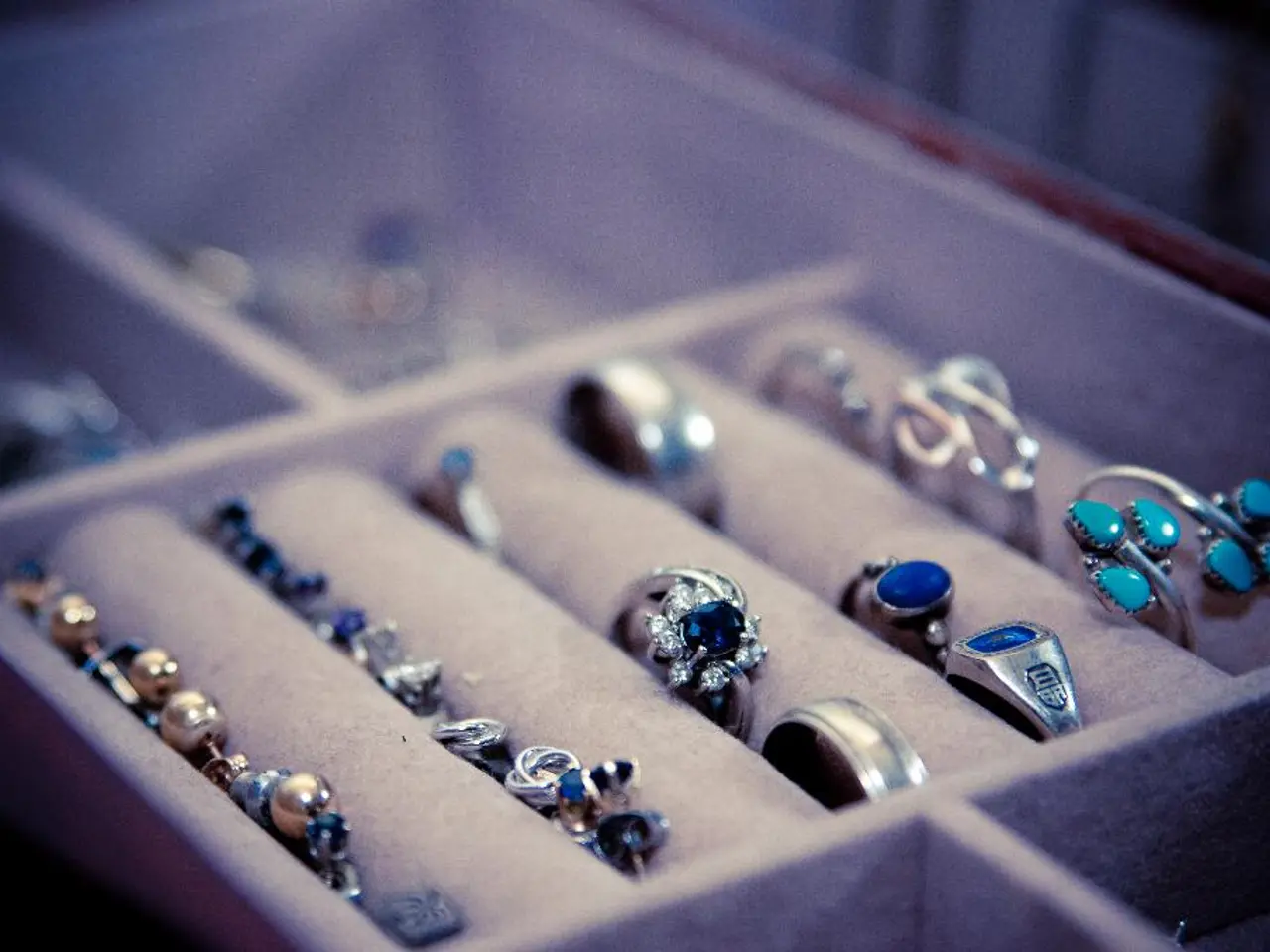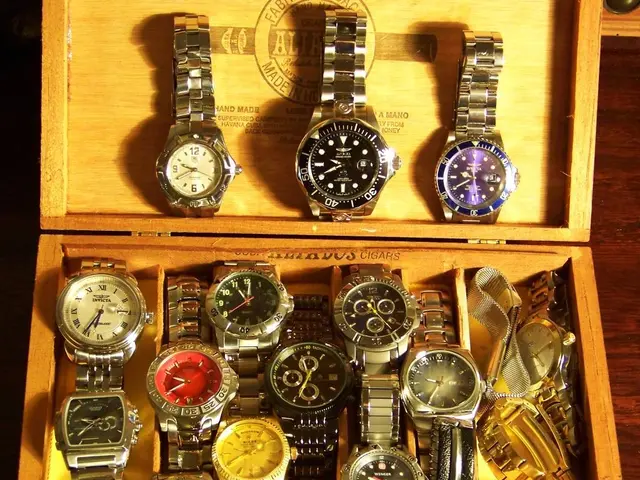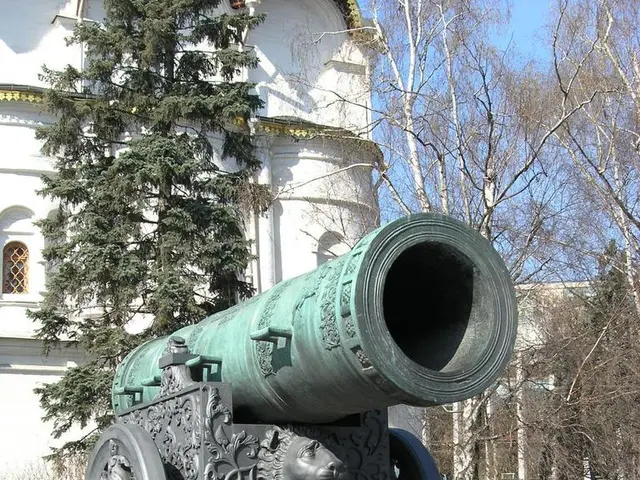Exploring Antwerp's Ancient Diamond Quarter in the Afternoon
In the heart of Belgium lies Antwerp, a city renowned for its rich diamond trade, dating back to 1447. This historic district, often referred to as the Diamond Quarter or Diamond Exchange, has evolved into a modern and efficient marketplace, attracting diamond traders from around the globe.
The Antwerp Diamond Bourse, built in 1904, serves as a centralised trading hub, providing a safe and secure environment for diamond dealers to conduct business. The concentration of over 1,470 diamond companies and more than 4,500 individual dealers within the district facilitates large volumes of trade, with approximately 84% of the world's rough diamonds passing through Antwerp annually[1][5].
The district hosts a diverse market, encompassing small, one-person operations to large multinational companies. Antwerp emphasises its legacy in natural diamonds, distinguishing itself from synthetic diamond markets through strict certification and disclosure practices[1][3].
Certification and transparency are paramount in Antwerp's diamond trade. Buyers focus heavily on certifications that verify the authenticity and grading of diamonds. Since 2023, Belgian regulations require jewelers to clearly disclose whether a diamond is natural or synthetic before purchase, reinforcing consumer protection and trust[3][5].
The district's layout allows numerous dealers and brokers to interact in person, fostering long-term business relationships built on trust, ethics, and transparency, deeply embedded in Antwerp’s diamond trade culture[1][5].
One of the unique cuts showcased in Antwerp is the Royal 201 cut, a modification of the round modern brilliant cut, introduced circa 2004. This cut, with 65 crown and 40 pavilion facets, plus 96 micro facets on the girdle, results in higher brilliance and fire compared to the modern brilliant cut[2]. However, its different proportions may affect color grading, making a Royal 201 cut stone appear a higher color grade than it actually is[8].
Antwerp's diamond trade is supported by institutions like the Antwerp World Diamond Centre (AWDC), which maintains Antwerp’s position as a world diamond centre. HDR Antwerp is another famous institution, offering state-of-the-art devices for gemmology and diamond manufacturing and screening[7].
For those interested in learning more about gemmology, subscription options for Gems&Jewellery and The Journal of Gemmology are available. Additionally, Gem-A courses and workshops provide opportunities to delve deeper into the world of diamonds[6].
Visitors to Antwerp are encouraged to explore its rich diamond history, including the contributions of native son Marcel Tolkowsky, who refined the brilliant cut of diamonds early in the 20th century[6]. The Port House of Antwerp, designed by Zaha Hadid, serves as a symbol of the city's diamond heritage[3].
In 2017, Antwerp traded approximately 234 million carats of diamonds, cementing its status as a global leader in the diamond trade[1]. Despite its prominence in the diamond industry, it's worth noting that diamonds, not beer, are Belgium's top export[9].
In practice, trading often involves examining loose diamonds offered by dealers, where buyers assess certifications, quality, and value before purchasing. The district’s layout and culture facilitate this process, fostering a professional, secure, and highly efficient marketplace that combines tradition with rigorous modern standards[1][5].
References: 1. https://www.awdc.be/ 2. https://www.diamondland.be/ 3. https://www.portofantwerp.com/ 4. https://en.wikipedia.org/wiki/Antwerp_Diamond_Bourse 5. https://www.diamondfacts.org/antwerp-diamond-trade/ 6. https://www.gem-a.com/ 7. https://www.hdra.be/ 8. https://www.diamondland.be/royal-201-cut/ 9. https://tradingeconomics.com/belgium/exports/diamonds
- The Antwerp Diamond Bourse, established in 1904, functions as a centralized trading hub for the over 1,470 diamond companies and more than 4,500 individual dealers within the district.
- Antwerp's diamond trade prioritizes certification and transparency, with buyers focusing on ensuring the authenticity and grading of diamonds through rigorous certification practices.
- The district offers institutions like the Antwerp World Diamond Centre (AWDC) and HDR Antwerp, which contribute to maintaining Antwerp’s position as a world diamond centre and provide state-of-the-art devices for gemmology and diamond manufacturing and screening.
- For those interested in learning more about gemmology, opportunities like subscription to Gems&Jewellery and The Journal of Gemmology, as well as Gem-A courses and workshops, are available.
- Antwerp, despite being renowned for its rich diamond trade, remains a city that exports more diamonds than beer, cementing its status as a global leader in the diamond trade.




